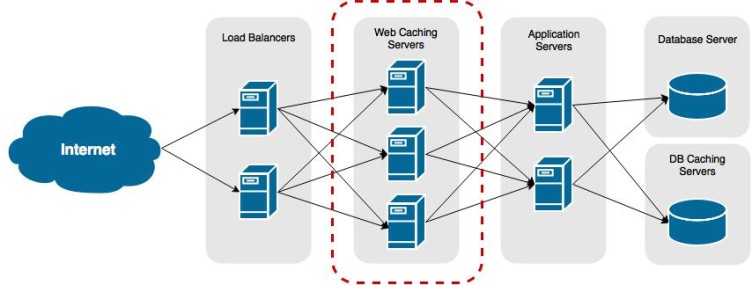The Journey of a Web Request: From Typing "https://www.google.com" to Loading the Page
 Idris Yakub
Idris YakubTable of contents

Introduction:
In today's interconnected world, browsing the web has become an integral part of our daily lives. Have you ever wondered what happens behind the scenes when you type a URL like "https://www.google.com" into your browser and hit Enter? This seemingly simple action sets off a complex chain of events involving various technologies and components working together seamlessly to deliver the web page to your screen. In this blog post, we'll take a deep dive into the journey of a web request, exploring concepts like DNS requests, TCP/IP, firewalls, HTTPS/SSL, load balancers, web servers, application servers, and databases.
Web Concepts:
DNS Request: Your browser initiates the process by sending a Domain Name System (DNS) request to translate the human-readable domain name "www.google.com" into an IP address. DNS servers play a crucial role here, responding with the IP address of Google's servers (e.g., 216.58.194.174).
TCP/IP Handshake: Once the IP address is obtained, your browser establishes a connection using the Transmission Control Protocol (TCP) and Internet Protocol (IP) to the destination server. A three-way handshake ensures a reliable and secure connection between your device and the server.
Firewall: Before the connection is established, it might pass through a firewall, a security barrier that filters incoming and outgoing traffic. Firewalls help protect against unauthorized access and potential threats.
HTTPS/SSL Encryption: In the case of a secure connection (https), a process called Secure Sockets Layer (SSL) or Transport Layer Security (TLS) encryption comes into play. The server presents a digital certificate to your browser, which verifies the authenticity of the website. Encryption ensures that data exchanged between your device and the server remains private and secure.
Load Balancer: High-traffic websites often employ load balancers to distribute incoming requests across multiple servers. Load balancers optimize resource utilization, enhance performance, and maintain server availability. Your request might be directed to one of Google's numerous servers to balance the load.
Web Server: Upon reaching the appropriate server, the web server (e.g., Google's web server) processes the request. It retrieves the requested web page and associated resources (images, stylesheets, scripts) from its storage.
Application Server: In dynamic websites or web applications, an application server may be involved. It processes business logic, database queries, and other server-side functions before sending the final response to the web server.
Database: If the web page requires data from a database (e.g., search results, user profiles), the application server queries the database, retrieves the relevant data, and combines it with the web page's structure.
Response Generation: With all the necessary resources and data in hand, the web server constructs an HTTP response. This response includes the HTML code, which defines the structure of the page, along with additional assets like images, stylesheets, and scripts.
Data Transmission: The web server sends the HTTP response back through the established TCP/IP connection. The SSL/TLS encryption ensures the secure transmission of data.
Browser Rendering: Upon receiving the response, your browser begins to render the web page. It processes the HTML to create a Document Object Model (DOM), fetches additional resources, applies styles, and executes scripts to make the page interactive and visually appealing.
Conclusion:
The journey of a web request from typing "https://www.google.com" to loading the page is a remarkable interplay of various technologies and components. From DNS resolution to encryption, load balancing to server processing, and databases to browser rendering, each step contributes to the seamless browsing experience we often take for granted. Understanding this intricate process enhances our appreciation for the technology powering the modern web.
Subscribe to my newsletter
Read articles from Idris Yakub directly inside your inbox. Subscribe to the newsletter, and don't miss out.
Written by

Idris Yakub
Idris Yakub
I am a software (full-stack) engineer, an architect of digital dreams, I build seamless software solutions, pushing the boundaries of technology, and crafting elegant code that defies limits. From designing captivating user interfaces to optimizing intricate systems.